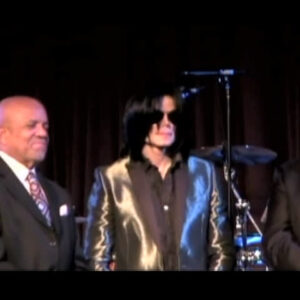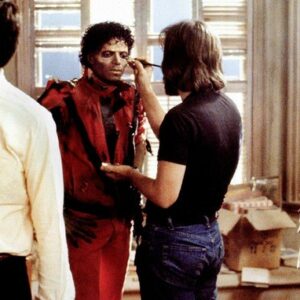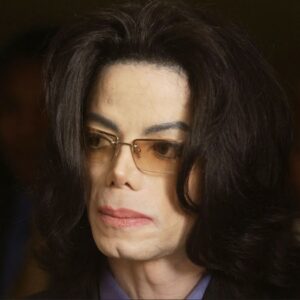Introduction
In a town brimming with talent, ambition, and the ever-elusive concept of “star quality,” very few actors rise to the heights of superstardom with the effortless charm and undeniable allure that Brad Pitt did. Over three decades, Pitt has cemented himself as one of Hollywood’s most iconic actors—known not only for his striking looks but for his uncanny ability to blend into any character, whether it’s the brooding Louis in Interview with the Vampire or the unpredictable Tyler Durden in Fight Club. While Pitt is now a household name, adored by fans and respected by critics alike, his journey to the pinnacle of Hollywood began with a series of roles that steadily built his reputation as more than just a pretty face. To truly understand Pitt’s rise, we need to dive into the early chapters of his career, where we find a young actor hungry for success, ready to take risks, and ultimately shape himself into a global icon.
The Early Struggles: From Obscurity to Opportunity
Every legendary actor has their humble beginnings, and Brad Pitt was no exception. Born in Shawnee, Oklahoma, in 1963, and raised in Springfield, Missouri, Pitt’s life early on didn’t exactly scream “future Hollywood megastar.” Yet, his good looks and undeniable charm helped him snag minor roles after moving to Los Angeles in the late 1980s. Before landing any significant parts, Pitt found himself doing the rounds on television, picking up small, mostly forgettable roles in shows like Dallas and Growing Pains. While these parts were far from glamorous, they were crucial for Pitt in honing his craft and learning the ins and outs of the industry.
It was clear that Brad Pitt had something—a magnetism that came through the screen, even in these smaller roles. But what he needed was the right vehicle to break through the crowd of Hollywood hopefuls and land in the spotlight. That moment would come, as it often does in Hollywood, with a little bit of luck and the perfect opportunity.
The Turning Point: Thelma & Louise – A Star is Born
For Pitt, that opportunity arrived in the form of Ridley Scott’s Thelma & Louise (1991). In this landmark film, Pitt played J.D., a charismatic drifter who steals the heart (and the cash) of Geena Davis’s character, Thelma. With his sun-kissed blonde hair, cowboy hat, and infectious smile, Pitt stole every scene he was in. What was initially intended to be a minor role for the young actor turned into a career-defining moment, instantly turning Pitt into a symbol of raw sexual magnetism and youthful rebellion.
Critics and audiences alike couldn’t help but notice the actor’s irresistible screen presence. He wasn’t just handsome—he exuded a certain charm that transcended the stereotypical “bad boy” image his character portrayed. Hollywood producers took note, too. Here was an actor who could not only melt hearts but also command attention with a mere glance. And just like that, Brad Pitt went from being an aspiring actor to one of the most talked-about men in Hollywood.
Breaking Through: A River Runs Through It – A Leading Man Emerges
After the success of Thelma & Louise, Pitt could have easily fallen into the trap that often befalls handsome young actors—being typecast as the pretty boy, the romantic lead, the “flavor of the month.” But Pitt, to his credit, was more interested in depth than in shallow fame. He wanted to prove himself as a serious actor, and his next major role would do just that.
In A River Runs Through It (1992), directed by Robert Redford, Pitt played Paul Maclean, a wild and carefree man with a love for fly fishing and a penchant for trouble. This was no typical leading role. It required a subtlety that many actors at Pitt’s stage of career might have struggled with. However, Pitt delivered a performance that was both emotionally charged and understated, showing audiences a more serious and reflective side of his acting ability.
The film was widely praised, with critics noting Pitt’s nuanced performance as a standout. The actor wasn’t just another Hollywood pretty face—he was a real talent with depth and range. With this film, Pitt had firmly established himself as a leading man in Hollywood, one capable of handling complex, layered roles.
Taking Risks: Kalifornia and True Romance – A Star with Grit
What came next for Brad Pitt was a series of bold, risky choices that only further proved his commitment to avoiding typecasting. While many actors in Pitt’s position would have sought out more romantic leading roles to capitalize on their newfound fame, Pitt did the opposite. He sought out dark, gritty, and unconventional roles that would challenge him as an actor.
In Kalifornia (1993), Pitt played Early Grayce, a violent, psychopathic killer on a road trip with his girlfriend and an unsuspecting couple. This role was a stark contrast to the charming, likable characters he had previously played. Pitt immersed himself in the darkness of the character, bringing a raw, unsettling intensity to the screen. While Kalifornia wasn’t a major box-office success, it was another opportunity for Pitt to show off his range.
Around the same time, Pitt also made a brief but memorable appearance in True Romance (1993), directed by Tony Scott and written by Quentin Tarantino. In the film, Pitt played Floyd, a lovable, perpetually stoned couch surfer who spends most of his time smoking weed and watching TV. The role was small, but Pitt’s comedic timing and laid-back charisma stole the show, making Floyd one of the film’s most memorable characters.
Becoming a Serious Actor: Interview with the Vampire – The Power of Transformation
One of the most significant milestones in Pitt’s early career came in 1994 with Interview with the Vampire, where he starred opposite Tom Cruise. Playing the brooding vampire Louis de Pointe du Lac, Pitt took on a character far removed from the action-hero roles that Hollywood was offering him at the time. Louis was introspective, tortured, and deeply philosophical—a vampire cursed with eternal life and struggling with the morality of taking human lives.
Pitt’s performance was haunting and melancholic, as he perfectly captured Louis’s existential dread. His chemistry with Cruise, who played the charismatic vampire Lestat, was electric, and the film became a major box-office success. More importantly, it was a pivotal moment for Pitt, demonstrating that he could handle the kind of weighty, dramatic roles that required more than just good looks and charm.
Critics praised Pitt’s ability to convey complex emotions with subtlety, and audiences were drawn to his portrayal of a tortured soul. With Interview with the Vampire, Pitt solidified his status as a serious actor capable of taking on challenging and diverse roles.
Conclusion: The Path to Stardom
Brad Pitt’s rise to fame in the early 1990s was anything but typical. While his good looks undoubtedly played a role in his initial breakthrough, it was his talent, dedication, and willingness to take risks that set him apart from other actors of his generation. Whether playing a charming drifter, a troubled fly fisherman, or a psychopathic killer, Pitt consistently pushed himself to explore new territories and avoid being pigeonholed.
By the mid-1990s, Pitt had already laid the foundation for what would become an illustrious career. He had proven himself as a versatile actor capable of tackling a wide range of characters and genres, from romantic dramas to psychological thrillers. And as the years went on, Pitt would only continue to grow as an artist, taking on even more daring roles and becoming one of the most respected actors of his generation.
Brad Pitt’s early career was defined by more than just his status as a heartthrob—he was an actor who sought to challenge himself, to push boundaries, and to leave a lasting impact on the world of film. Today, as we look back on his remarkable body of work, it’s clear that the seeds of his success were planted in those early roles. They were the stepping stones that led Brad Pitt from being a breakout star in Thelma & Louise to becoming the Hollywood icon we know today.





